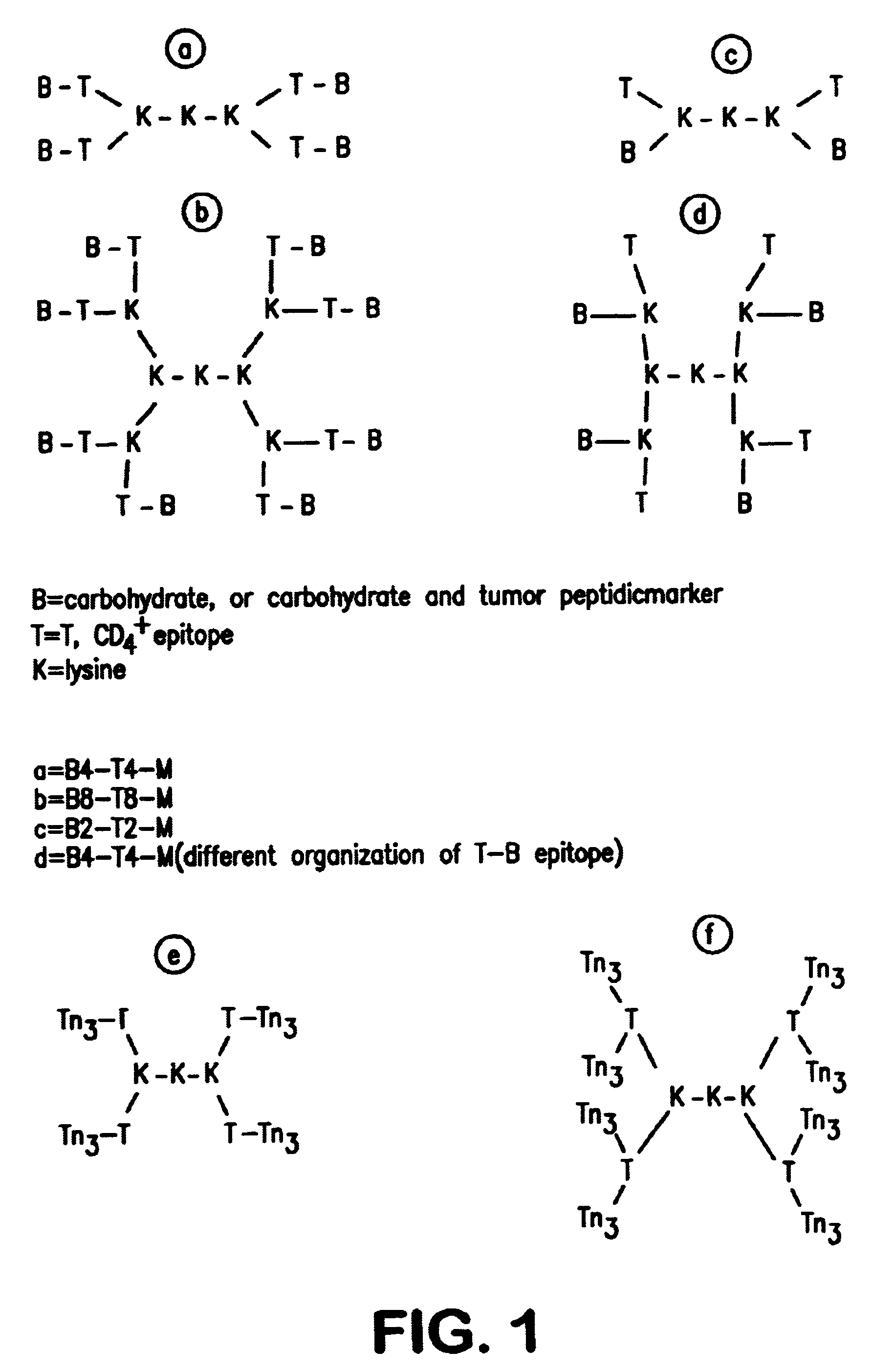Multiple antigen glycopeptide carbohydrate vaccine comprising the same and use thereof
a glycopeptide and glycoconjugate technology, applied in the field of immunotherapy, can solve the problems of ambiguity in composition and structure, low level of desired antibodies, and inducible immune respons
- Summary
- Abstract
- Description
- Claims
- Application Information
AI Technical Summary
Benefits of technology
Problems solved by technology
Method used
Image
Examples
first embodiment
In the linear carbohydrate peptide conjuguate described above, the peptide and the carbohydrate moiety are directly covalently bound within the molecule.
second embodiment
In the linear carbohydrate peptide conjuguate of the invention, the peptide and the carbohydrate moiety are linked via a spacer.
In a first aspect, the spacer consists of an aminoacid chain. This aminoacid chain may have an aminoacid lenght of 1 to 5 aminoacids.
In a second aspect, the spacer consists of a carbohydrate residue or of a chain of multiple carbohydrate residues.
The spacer can be also an aliphatic chain (1 to 10 carbon atoms).
Most preferably, the carbohydrate moiety comprised in the carbohydrate peptide conjugate described above is selected from the group consisting of 1 to 6 residues of a Tn antigen, or a Tn antigen derivative.
These linear carbohydrate peptide conjuguates according to the invention have been successfully used to induce a high level of antibodies specific to the carbohydrate moiety, and particularly to the Tn carbohydrate moiety which mimic a tumoral cell antigen.
Thus these linear carbohydrate peptide conjuguates can be used in immunotherapy methods agains...
example 1
Synthesis of the Glycoconjugate According to the Invention
The strategy for the construction of the MAG conjugate first involved the synthesis of the Tn antigen which represents the B cell epitope. This glycosidic tumor marker was then conjugated to a poly-lysine core (M) in association with the peptidic CD4.sup.+, T cell epitope, giving the full construction B4-T4-M. In addition, the reference compounds which are necessary for the immunological tests were synthetized (B, T, B T, B4 M, T4 M, M).
The synthesis of the Tri antigen 2 (FIG. 2) was performed by classical methods (Ref. 19, Ref. 20) starting from tri-O-acetyl-D-galactal (Shafizadeh et al. (1989)). N (Fluorenylmethoxycarbonyl)-L-serine tert-butyl ester (Vowinkel et al. (1967), Schultz et al. (1993)) was used for the Koenigs-Knorr reaction with 3,4,6-tri-O-acetyl-2-azido-2-deoxy-b-D-galactopyranosyl chloride (Lemieux et al. (1979), Ferrari et al. (1980)), giving the protected derivative 1. The final deprotection of acetyl and o...
PUM
| Property | Measurement | Unit |
|---|---|---|
| reaction time | aaaaa | aaaaa |
| flow rate | aaaaa | aaaaa |
| pH | aaaaa | aaaaa |
Abstract
Description
Claims
Application Information
 Login to View More
Login to View More - R&D
- Intellectual Property
- Life Sciences
- Materials
- Tech Scout
- Unparalleled Data Quality
- Higher Quality Content
- 60% Fewer Hallucinations
Browse by: Latest US Patents, China's latest patents, Technical Efficacy Thesaurus, Application Domain, Technology Topic, Popular Technical Reports.
© 2025 PatSnap. All rights reserved.Legal|Privacy policy|Modern Slavery Act Transparency Statement|Sitemap|About US| Contact US: help@patsnap.com



